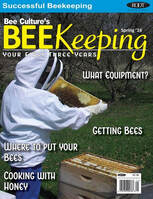 Photo caption: "Kevin Duesman with the Treasure Valley Beekeepers Club shows students and parents live bees in a viewing hive during the adopt-a-pollinator event at Mariposa Park on Wednesday, April 20, 2022. " A helpful resource from the USDA on Montana Native Plants for Pollinator-Friendly Plantings
The Honey Bee Health Coalition has fantastic resource for varroa management. Download the last version of Tools for Varroa Management and more (Check out the Integrated Pest Management spreadsheet tool!) on their website. You can also view the many helpful videos they have produced on YouTube. Why does this matter?
Every honey bee colony in the continental United States and Canada either has Varroa mites today or will have them within several months. Varroa mite infestation represents one of the greatest threats to honey bee health, honey production, and pollination services. When honey bee colonies are untreated or treated ineffectively colonies can fail and beekeepers can incur major economic losses, and, ultimately, agricultural food production may be impacted. In addition, colonies with Varroa are a source of mites that can spread to other colonies, even in other apiaries, through drifting, robbing, and absconding activity of bees. All beekeepers should remain vigilant to detect high Varroa mite levels and be prepared to take timely action in order to reduce mite loads. Effective mite control will reduce colony losses and avoid potential spread of infectious disease among colonies. TVBC members recommend these websites for reading about honeybee research and health:
http://scientificbeekeeping.com https://beeinformed.org https://honeybeehealthcoalition.org You can view the latest revision of the City of Boise code for beekeeping on your property on their website. The beekeeping ordinance can be found under Chapter 11 Development code / Use regulations / Accessory use
The University of Minnesota has free resources on beekeeping specific to northern climates. Their free manual, Beekeeping in Northern Climates, has information for first and second year beekeepers including how to feed, install packages, and troubleshooting problems. You can also download Beekeeping in Northern Climates (Second Edition), the 2016 companion, and first edition manual at beelab.umn.edu/manuals. If you wish to donate to their Bee Lab see the Giving page.
Interested in building some of your own equipment? This thread on Bee Source has PDFs of plans from 10 frame hives and frames to nucs and screened bottom boards.
Table of plants for this region that are attractive to honey bees (and other pollinators!)
|
|||||||||||||
|
Mailing Address
Treasure Valley Beekeepers Club PO Box 5066 Boise, Idaho 83705-0066 |
|




